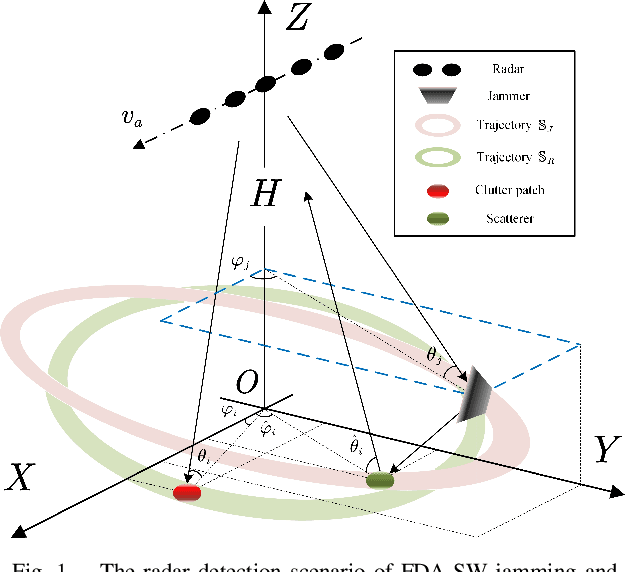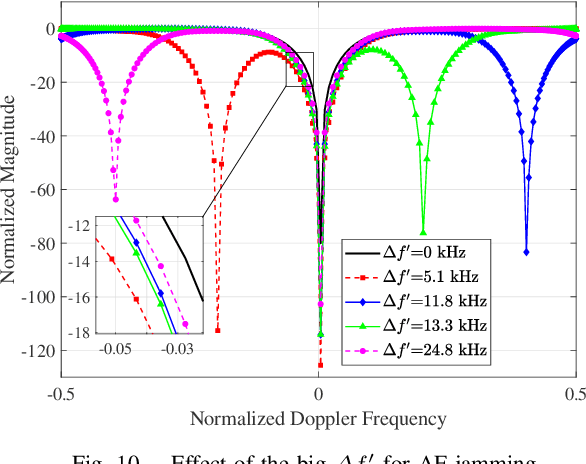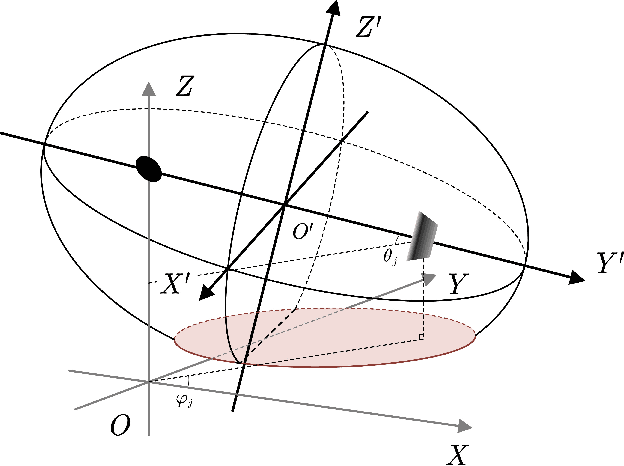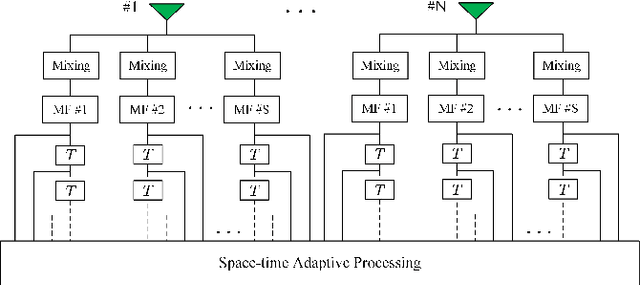Wen-qin Wang
FDA Jamming Against Airborne Phased-MIMO Radar-Part II: Jamming STAP Performance Analysis
Aug 06, 2024



Abstract:The first part of this series introduced the effectiveness of frequency diverse array (FDA) jamming through direct wave propagation in countering airborne phased multiple-input multiple-output (Phased-MIMO) radar. This part focuses on the effectiveness of FDA scattered wave (FDA-SW) jamming on the space-time adaptive processing (STAP) for airborne phased-MIMO radar. Distinguished from the clutter signals, the ground equidistant scatterers of FDA-SW jamming constitute an elliptical ring, whose trajectory equations are mathematically derived to further determine the spatial frequency and Doppler frequency. For the phased-MIMO radar with different transmitting partitions, the effects of jamming frequency offset of FDA-SW on the clutter rank and STAP performance are discussed. Theoretical analysis provides the variation interval of clutter rank and the relationship between the jamming frequency offset and the improvement factor (IF) notch of phased-MIMO-STAP. Importantly, the requirements of jamming frequency offset for both two-part applications are discussed in this part. Numerical results verify these mathematical findings and validate the effectiveness of the proposed FDA jamming in countering the phased-MIMO radar.
Coherent FDA Radar: Transmitter and Receiver Design and Analysis
Aug 06, 2024Abstract:The combination of frequency diverse array (FDA) radar technology with the multiple input multiple output (MIMO) radar architecture and waveform diversity techniques potentially promises a high integration gain with respect to conventional phased array (PA) radars. In this paper, we propose an approach to the design of the transmitter and the receiver of a coherent FDA (C-FDA) radar, that enables it to perform the demodulation with spectral overlapping, due to the small frequency offset. To this purpose, we derive the generalized space-time-range signal model and we prove that the proposed C-FDA radar has a higher coherent array gain than a PA radar, and at the same time, it effectively resolves the secondary range-ambiguous (SRA) problem of FDA-MIMO radar, allowing for mainlobe interference suppression and range-ambiguous clutter suppression. Numerical analysis results prove the effectiveness of the proposed C-FDA radar in terms on anti-interference and anti-clutter capabilities over conventional radars.
 Add to Chrome
Add to Chrome Add to Firefox
Add to Firefox Add to Edge
Add to Edge